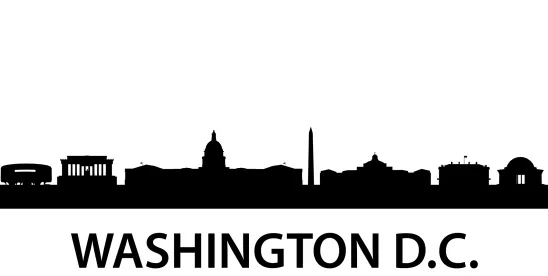The Beltway Buzz is a weekly update summarizing labor and employment news from inside the Beltway and clarifying how what’s happening in Washington, D.C., could impact your business.
POTUS Issues Immigration Proclamation, Closes Border. On June 4, 2024, President Biden issued a proclamation addressing the immigration and humanitarian crisis at the United States’ southern border. The proclamation temporarily suspended and limited the entry of noncitizens into the United States across the southern border, effective 12:01 a.m. eastern daylight time on June 5, 2024. Pursuant to the proclamation, the secretary of homeland security will discontinue the suspension and limitation on entry “at 12:01 eastern time on the date that is 14 calendar days after the [s]ecretary makes a factual determination that there has been a 7-consecutive-calendar-day average of less than 1,500 encounters” along the border. The suspension will be reinstated upon “a factual determination that there has been a 7-consecutive-calendar-day average of 2,500 encounters or more.” Although the proclamation does not directly address employment-based immigration, the initiative is a significant development in a policy area—immigration—that is likely to be center stage as we approach the November 2024 elections.
Republicans Seek to Rescind DOL OT Rule. This week, Senator Mike Braun (R-IN) and Representative Tim Walberg (R-MI) introduced a Congressional Review Act resolution to rescind the U.S. Department of Labor’s (DOL) overtime rule. Even if the resolution clears Congress—which won’t be an easy task—it will be vetoed by President Biden. As a reminder, beginning on July 1, 2024, the overtime rule will increase the salary basis threshold to $43,888 per year, and employees making below that figure will automatically be eligible for overtime pay. This salary level will increase to $58,656 per year, beginning on January 1, 2025. Employer groups have also filed a legal challenge to the rule.
Foxx to EEOC: Make Workplace Speech Memo Available for Public Comment. On June 4, 2024, Representative Virginia Foxx (R-NC), chair of the U.S. House of Representatives Committee on Education and the Workforce, sent a letter to Charlotte Burrows, chair of the U.S. Equal Employment Opportunity Commission (EEOC), seeking information about a joint memorandum the EEOC is pursuing with the National Labor Relations Board (NLRB) relating to situations in which offensive or harassing workplace conduct and speech occurs while employees are otherwise engaging in concerted activity protected by the National Labor Relations Act. The NLRB addressed this situation in 2020 by issuing a decision setting forth commonsense rules for dealing with such situations, but the Board has since reversed that case, creating confusion for employers trying to maintain workplace cultures and environments free from unlawful harassment. Now, after reports of the forthcoming memo from the EEOC and the Board, Foxx has asked Burrows to make the memo available for public comment from interested stakeholders. Foxx notes in her letter that if the EEOC backtracks on its duty to ensure harassment-free workplaces, it “will demonstrate that the Biden administration’s insistence on appeasing labor unions takes precedence over protecting workers from harassment.”
Cassidy Seeks Input on Portable Benefits Options. In a letter issued this week, Senator Bill Cassidy (R-LA), ranking member of the U.S. Senate Committee on Health, Education, Labor and Pensions, sought stakeholder feedback on ways in which federal law could be changed in order to “improve workers’ ability to pursue careers of their choice while allowing access to historically employment-based benefits like health care and retirement benefits.” The letter sets forth a series of issues and questions relating to worker status (e.g., where to draw the line between employee and independent contractor in a way that best serves the worker and “[w]hat are the chief federal legal and regulatory obstacles preventing the provision of benefits to independent contractors?”), the types of benefits that are most desirable, how to provide benefits when a worker serves multiple clients, and who should pay for any benefits.
OSHRC: Commissioner Confirmations on the Way? President Biden announced this week that he would nominate Mark Eskenazi to serve on the three-member Occupational Safety and Health Review Commission (OSHRC). Eskenazi currently serves as assistant general counsel at the Office of the United States Trade Representative, and he previously worked at the NLRB. OSHRC has been down to one commissioner, Chair Cynthia Attwood, since April 2023. The confirmation of Eskenazi, along with former commissioner Amanda Wood Laihow, would restore a quorum at OSHRC.
The G.I. Bill of Rights. June 6, 2024, was the eightieth anniversary of the Normandy landings—commonly referred to as D-Day—the Allied invasion of occupied France that set the stage for the defeat of Germany and the Axis powers in World War II. Shortly thereafter, in recognition of the sacrifice of the soldiers that participated both in D-Day as well as in the greater war effort, President Franklin D. Roosevelt and members of Congress pushed federal legislation to provide a series of benefits for returning veterans. Backed by the American Legion, the Servicemen’s Readjustment Act of 1944 unanimously passed both the House and Senate, and was signed into law by President Roosevelt on June 22, 1944, a little over two weeks after the D-Day invasion. Commonly referred to as the G.I. Bill of Rights, the act provided aid—such as unemployment insurance, low-interest mortgages, and educational assistance—to help veterans readjust to civilian life. While many benefited—about eight million veterans received education benefits within ten years of the act’s passage—the act has been criticized as exacerbating the racist practices and disparities of the time. Many Black veterans were discriminated against with regard to receipt of the act’s benefits, particularly with regard to mortgages. By 1956, when the original act expired, the government had disbursed more than $14.5 billion in education benefits and $33 billion worth of home loans to veterans.




 />i
/>i

